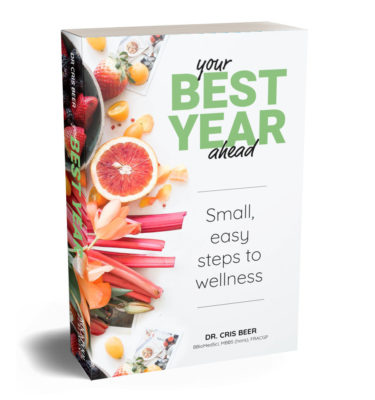Most of us are aware that we need to eat more fruit and vegetables. What we may not understand is that we also need to eat an assortment of different coloured fruits and vegetables each day. Different coloured fruit and vegetables have different nutrients and so variation in our diet is essential for us to get all that our body needs from these foods. Simply eating the same piece of fruit each day and just lettuce on our sandwich does not cut it. Ideally we need to aim to eat a colourful rainbow a day of fruit and vegetables. That is, we need to consume all seven colours of the fruit and vegetable rainbow every day to receive the protection we need from chronic diseases.
A Rainbow a Day Keeps the Doctor Away
Here are some examples of the different coloured fruit and vegetables that you should be eating each day.
ORANGE FRUITS & VEGETABLES
- Carrots
- Sweet potatoes
- Apricots
- Mangoes
- Squash
- Sweet corn
- Cantaloupe
- Papayas
- Pumpkin
RED FRUITS AND VEGETABLES
These are coloured by natural plant pigments called ‘lycopene’ or ‘anthocyanins’. Lycopene
- Red apples
- Red capsicum (peppers)
- Beets
- Pomegranates
- Red cabbage
- Red potatoes
- Cherries
- Radishes
- Cranberries
- Raspberries
- Pink grapefruit
- Rhubarb
- Red grapes
- Strawberries
- Tomatoes
- Watermelon
YELLOW/ORANGE FRUITS
- Oranges
- Yellow grapefruit
- Lemons
- Tangerines/mandarins
- Limes
RED/PURPLE FRUITS AND VEGETABLES
- Blackberries
- Purple grapes
- Blueberries
- Raisins
- Eggplant
- Prunes
- Figs
- Red wine
- Raspberries
- Red cabbage
- Plums
YELLOW/GREEN FRUITS AND VEGETABLES
- Green apples
- Honeydew melon
- Green grapes
- Artichokes
- Kiwi
- Green cabbage
- Asparagus
- Lettuce
- Spinach
- Avocados
- Limes
- Green pepper
- Green beans
- Green onions
- Cucumbers
- Broccoli
- Peas
- Zucchini
- Brussels sprouts
GREEN VEGETABLES
- Broccoli
- Brussels sprouts
- Cabbage
- Cauliflower
WHITE FRUITS AND VEGETABLES
- Bananas
- Onions
- Cauliflower
- Parsnips
- Garlic
- Potatoes
- Ginger
- Turnips
- Mushrooms
Ideally when it comes to fruit-and-vegetable intake we should be aiming to eat at least five serves of vegetables per day and two serves of fruit per day. Many people eat suitable amounts of fruit but not enough vegetables.
Some suggestions for increasing vegetable intake would be to eat a large salad for lunch every day, have a stirfry for dinner, or even hide vegetables in casseroles, bolognaise, lasagnes etc. I have spoken with a patient who includes vegetables like spinach, kale and carrot in homemade muffins and adds cocoa powder to hide the taste.
If you find that you consistently are missing out on eating, or are even avoiding, a certain group of fruit and/or vegetable consider taking a powdered supplement. These can come as a general fruit/vegetable extract containing concentrated phytonutrients or as a specific coloured powder, usually green, which contains concentrated nutrients from that specific group. Eating the whole fruit or vegetable is more beneficial but adding a powdered supplement is an acceptable trade-off if you or your child simply cannot stand to eat fruit or vegetables.
#healthyhabits #healthyliver
Dr Cris
Holistic Medical Doctor, Author ‘Healthy Habits, 52 Ways to Better Health‘ and Healthy Liver



